The Bluebell Railway in Sussex: a journey back in time to the Golden Age of British rail travel
and live on Freeview channel 276
The closures started in the 1960s with British Railways Board chairman Dr Richard Beeching shutting thousands of miles of railway and stations across the UK.
It’s a decision that can still cause people to shake their heads in dismay.
Advertisement
Hide AdAdvertisement
Hide AdRecently, this newspaper took a fascinating look at the lost railways of East and West Sussex, revealing evocative photos from the Golden Age of rail travel.
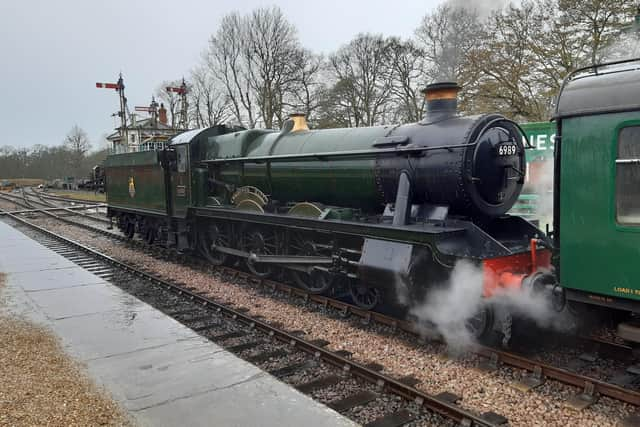

Thankfully, some stations in our county are not as ‘lost’ as others thanks to the vintage rail enthusiasts at The Bluebell Railway. This wonderful network travels through 11 miles of tranquil Sussex countryside, boasting one of the UK’s best collections of working steam locomotives and carriages.
Its stations are Horsted Keynes , Kingscote, East Grinstead and Sheffield Park where I started my own Great British Railway Journey on Friday morning (April 14).
As I walked into towards the ticket office I quickly got an idea of what to expect from the dozens of old-fashioned adverts adorning the fences.
Advertisement
Hide AdAdvertisement
Hide AdI met digital marketing officer James Cummins who explained that the railway runs normal passenger services. “All the services start from here,” he said of Sheffield Park station, calling it the ‘nerve centre’ of the railway’s operations. This station, built in 1882 and restored in the Brighton era style, is decorated in tastefully retro colours – all ruddy browns and creamy magnolia carefully painted onto pleasantly creaking wood. Even the tickets are the small, stubby kind that you just don't get from modern machines.
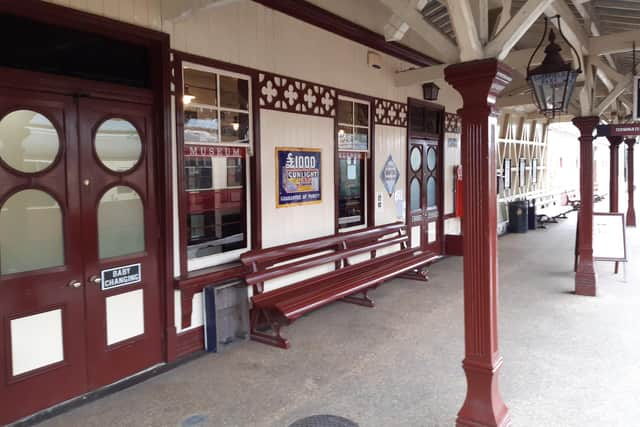

James continued: “On the opposite side of (Sheffield Park) station we’ve also got our Bluebell Railway Museum, which is run by our dedicated volunteers. That’s a real asset to the railway and something we're very proud of.”
I had an hour before the first train departed so I went in. The museum houses an incredible collection of bells, signs, model trains, clocks and various kinds of old machinery, with a well laid out, detailed history of the railway.
But one great thing about the Bluebell Railway is that its history is not static. The cheerful staff, all wearing proper period costume, directed me into Sheffield Park’s signal box to meet Paul Churchman. Paul, the chairman of the railway, was the signalman for the day. He said: “The red levers control the signals, the black and blue ones move the points on the track. Then we’ve got various indicators that show which way the points on all the signals are.”
Advertisement
Hide AdAdvertisement
Hide AdThe signal box also contains several brass bells used for communication, as well as a large diagram to show where trains are at any given time.
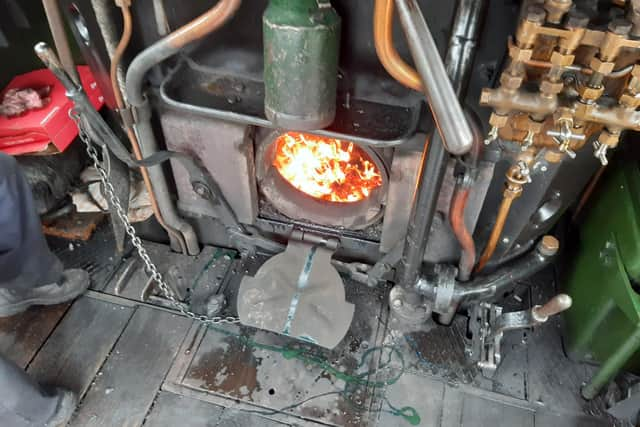

Just before the first train ride, I was invited into its cab by driver Bill White, which was well heated by the roaring coal furnace. With only a few minutes to go Bill gave me an all-too-brief but interesting guide to the multitude of levers and gauges. He also explained how the massive pile of coal is fed into the furnace to heat water, which results in the locomotive’s incredible steam power.
Boarding the train I saw it was the kind with an aisle on one side and a series of individual compartments on the other. The journey started at a glacial pace but certainly picked up speed after a few minutes. The incessant chugging of the engines and the occassional whistle really gives these old trains a sense of grandness that’s completely absent from modern ones. One particular detail I enjoyed was the way the steam suddenly billowed around the carriages when the train went through a tunnel.
My first stop was Kingscote and I had some trouble getting the door open, struggling to find a handle inside the carriage. Worried that the train would leave, I knocked on the glass and a staff member opened the door for me from the platform. He explained that I had to lower the window and open the door with the outside handle. This learning experience made me wonder whether modern day automation deprives people like me of common sense as well as a bit of light exericise.
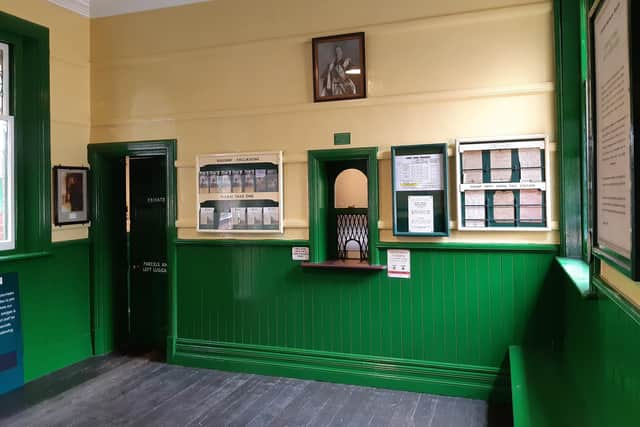

Advertisement
Hide AdAdvertisement
Hide AdKingscote is not very big but is bursting with mid 1950s character, painted in lush greens and beiges with almost orange brickwork. “The Friends of Kingscote do an amazing job,” James had told me while still at Sheffield Park. “Kingscote became the northernmost part of the line in the ’90s and was the northernmost terminus of the railway up until 2013.”
On a sunny weekend I could imagine the play and picnic areas full of families enjoying themselves. I could also imagine the travellers from a bygone era packing the platforms thanks the replica bags and cases neatly piled up there.
As an aside, on the way to the next stop I noticed that the train interior was a completely different style to the previous one. More ‘open plan’ and lacking the compartments, it instead had tables for four at each window with a central aisle. The last train of the day was like this too, but with more luxurious material on the seats and more leafy and angular design work on the covers.
Horsted Keynes is the biggest station on the line and, as James called it, ‘the jewel in the crown of the railway’. First built in 1882 by the London Brighton and South Coast Railway, it has now been restored to the Southern Railway period style of the mid 1920s. It was once the junction for the line to Ardingly and Haywards Heath too but closed in 1963.
Advertisement
Hide AdAdvertisement
Hide AdBut James said: “It became the terminus of the preserved Bluebell Railway up until mid nineties before we then extended onto the next station Kingscote.”
At Horsted Keynes I treated myself to a sausage roll and chips in the turquoise waiting room, and had a look inside the carriage and wagon workshop. There’s some historical information here but the real appeal of this place is seeing the bustling workshop itself with the team repairing the dedicated and rolling stock.
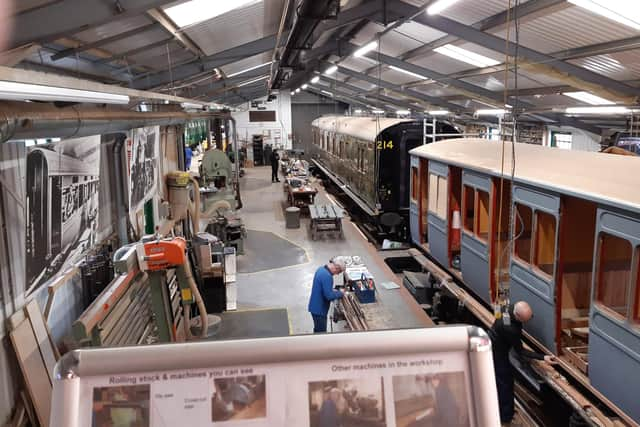

Unfortunately, time constraints meant I could not visit East Grinstead station. This opened in 2013 and as James explained: “This was the realisation of many people’s dreams. We reconnected with East Grinstead and reconnected to the national network.”
Bluebell Railway’s East Grinstead station is built alongside the Southern Station and is actually platform three. The connection means that the Bluebell Railway can welcome engines by rail for special occasions. It should prove useful when the famous Flying Scotsman returns to our vintage rails this summer.
Advertisement
Hide AdAdvertisement
Hide AdAll in all, my trip to The Bluebell Railway was an enjoyable, peaceful and thought-provoking journey back in time. It’s not only perfect for rail enthusiasts, it’s a lovely day out for families and anyone curious about southern England’s heritage and history.